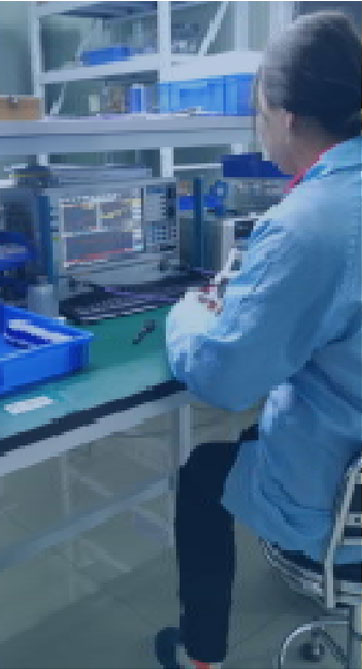
PIN diodes have evolved into key components for microwave and RF applications due to their built-in device properties Their ability to operate with fast state changes and low capacitance while maintaining minimal insertion loss fits them to switching modulation and attenuation tasks. The fundamental operating principle of PIN diode switching rests on adjusting current flow with a control bias. The bias voltage changes the junction depletion width which in turn influences the device conductance. Tuning the bias current allows PIN diodes to switch effectively at RF frequencies with reduced distortion
For applications demanding exact timing and control PIN diodes are typically incorporated into complex circuitry They are effective in RF filter designs to allow selective passage or rejection of designated frequency ranges. Their robust power handling means they can be used in amplifier power distribution and signal generation roles. Reduced size and improved efficiency of PIN diodes have enhanced their applicability in wireless and radar engineering
Coaxial Switch Design Principles and Analysis
The design of coaxial switches is intricate and needs detailed assessment of numerous variables Switch performance is contingent on the kind of switch operational frequency and its insertion loss attributes. Coaxial switch optimization emphasizes low insertion loss combined with high interport isolation
Performance assessment centers on return loss insertion loss and port isolation metrics. These values come from combined use of simulations theoretical predictions and experimental validation. Precise performance analysis is essential for guaranteeing dependable coaxial switch function in applications
- Simulations combined with analytic methods and practical experiments are standard for coaxial switch evaluation
- Switch performance may be significantly affected by thermal conditions impedance mismatches and production tolerances
- Cutting-edge developments and emerging trends in switch engineering work to improve performance while shrinking size and reducing power usage
LNA Performance Enhancement Techniques
Tuning LNA gain efficiency and performance parameters is essential for outstanding signal fidelity in diverse systems It necessitates thoughtful transistor selection bias configuration and circuit topology planning. Sound LNA architectures control noise contributions and support strong low-distortion amplification. Modeling and simulation tools enable assessment of how transistor choices and biasing alter noise performance. Securing a low Noise Figure indicates superior capability to amplify while adding little noise
- Prioritizing low-noise transistors is crucial for optimal LNA performance
- Optimal proper and suitable bias conditions are necessary to limit noise generation in transistors
- The chosen circuit topology plays a major role in determining noise behavior
Implementing matching networks noise reduction strategies and feedback control enhances LNA outcomes
PIN Diode Based RF Switching and Routing

Pin diode switch arrangements provide adaptable and low-loss routing for RF signal management The semiconducting switches operate at high speed to provide dynamic control over signal paths. Key benefits include minimal insertion loss and strong isolation to limit signal deterioration during switching. They are commonly used in antenna selection duplexers and phased array RF antennas
Switching depends on bias-induced resistance changes within the diode to route signals. As deactivated the diode provides high resistance, impeding RF signal transmission. When a positive control voltage is applied the diode resistance decreases reduces or falls allowing RF signals to pass
- Additionally PIN diode switches yield high switching speed low power draw and compact footprint
Multiple configurable architectures and design schemes of PIN diode switches facilitate complex routing operations. Arranging multiple switches in networked matrices enables flexible routing and dynamic configuration
Coaxial Microwave Switch Performance Evaluation

Comprehensive testing evaluation and assessment of coaxial microwave switches ensure optimal performance in systems. Many various diverse factors determine the switches’ performance including insertion reflection transmission loss isolation switching speed and bandwidth. Complete assessment involves quantifying parameters over diverse operational and environmental test conditions
- Additionally the assessment should examine reliability robustness durability and the ability to endure severe environmental conditions
- In the end the outcome of rigorous evaluation supplies essential valuable and critical information for switch selection design and optimization
Thorough Review of Noise Reduction Methods for LNAs
Low noise amplifier circuits are central to RF systems for enhancing weak signals and limiting internal noise. This survey offers an extensive examination analysis and overview of approaches to minimize LNA noise. We analyze investigate and discuss main noise origins such as thermal shot and flicker noise. We additionally assess noise matching feedback architectures and optimal bias strategies to curtail noise. It presents recent developments like new semiconductor materials and fresh circuit architectures that lower noise figure. Offering a thorough understanding of noise mitigation principles and methods the review helps designers and engineers build high performance RF systems
Rapid Switching System Uses for PIN Diodes

PIN diodes possess remarkable unique and exceptional traits that fit them well for high speed switching systems Low parasitic capacitance and small resistance enable quick switching to handle precise timing requirements. PIN diodes’ adaptive linear voltage response permits precise amplitude modulation and switching. The combination of adaptability versatility and flexibility makes them suitable applicable and appropriate across many high speed applications They are applied in optical communications microwave systems and signal processing equipment and devices
IC Coaxial Switch and Circuit Switching Advances
Coaxial switch integrated circuits deliver improved signal routing processing and handling within electronic systems circuits and devices. These integrated circuits are tailored to control manage and route signals via coaxial connections with high frequency performance and low insertion latency. Miniaturized IC implementations provide compact efficient reliable and robust designs enabling dense interfacing integration and connectivity
- By meticulously carefully and rigorously adopting these practices designers can deliver LNAs with excellent noise performance supporting reliable sensitive systems By carefully meticulously and rigorously applying these approaches designers can realize LNAs with outstanding noise performance enabling sensitive reliable electronic pin diode switch systems By meticulously carefully and rigorously applying these methods developers can produce LNAs with superior noise performance enabling sensitive reliable electronics By meticulously carefully and rigorously adopting these practices designers can deliver LNAs with excellent noise performance supporting reliable sensitive systems
- Applications of IC coaxial switch technology span telecommunications data communications and wireless networks
- Integrated coaxial switches are valuable in aerospace defense and industrial automation use cases
- Consumer electronics audio video equipment and test measurement instruments utilize IC coaxial switching
mmWave LNA Design Considerations and Tradeoffs

Millimeter wave LNA design must address elevated signal attenuation and stronger effects of intrinsic noise. At millimeter wave ranges parasitics dominate so meticulous layout and selection of components is essential. Ensuring low input mismatch and strong power gain is critical essential and important for LNA operation at mmWave. Active device choice, e g HEMTs GaAs MESFETs InP HBTs, is critical for low noise performance at mmWave. Moreover the implementation and tuning of matching networks is critical to achieving efficient power transfer and correct impedance matching. Managing package parasitics is required to avoid degradation in mmWave LNA operation. Using low loss transmission lines and thoughtful ground plane designs is essential necessary and important for minimizing reflection and keeping high bandwidth
Modeling Strategies for PIN Diode RF Switching
PIN diodes operate as essential components elements and parts in diverse RF switching applications. Comprehensive accurate and precise characterization of these devices is essential to enable design development and optimization of reliable high performance circuits. It consists of analyzing evaluating and examining electrical voltage current characteristics including resistance impedance and conductance. Frequency response bandwidth tuning traits and switching speed latency response time are part of the characterization
Furthermore developing precise models simulations and representations for PIN diodes is crucial essential and vital to forecast performance in complex RF systems. A range of modeling approaches including lumped element distributed element and SPICE models are used. Choosing the right model simulation or representation depends on specific detailed particular application requirements and desired required expected accuracy
High End Approaches for Low Noise Amplifier Design
Designing LNAs is a crucial task requiring careful attention to circuit topology and component selection to reach optimal noise performance. Novel and emerging semiconductor progress supports innovative groundbreaking sophisticated approaches to design that reduce noise significantly.
Examples of techniques are implementing employing and utilizing wideband matching networks choosing low noise transistors with strong intrinsic gain and optimizing biasing schemes strategies and approaches. Furthermore advanced packaging and thermal control strategies play an essential role in lowering external noise contributions. With careful meticulous and rigorous execution of these strategies designers can obtain LNAs exhibiting excellent noise performance for sensitive reliable systems
